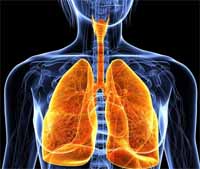Asthma, Particulate Air Pollution and the Role of the Immune System
By Marc Williams, PhD
 I’m an EPA biologist where I study the effects of air pollution—including asthma—on human health and the lungs. In particular, I explore how airborne pollution particles from car and diesel engine exhausts disrupt the lung’s immune system, contributing to a loss in protective immunity and promotion of allergic asthma.
I’m an EPA biologist where I study the effects of air pollution—including asthma—on human health and the lungs. In particular, I explore how airborne pollution particles from car and diesel engine exhausts disrupt the lung’s immune system, contributing to a loss in protective immunity and promotion of allergic asthma.
I work to pinpoint the mechanisms responsible for causing protective immunity to fail or to not work properly, in asthmatic individuals when they are exposed to airborne pollutant particles. One aspect of that work has helped determine that a highly specialized cell, called the dendritic cell (so named because it looks like a starfish), plays a major role in surveying the environment of the lung and plays a key role in the link between air pollution and asthma.
One of the functions of dendritic cells is to “eat up” (known as phagocytosis) foreign substances that enter the lung and stimulate a particular type of lymphocyte (a T-cell) to mount a protective immune response.
Under normal circumstances, this process runs smoothly. However, air pollution particles are very complex. When the dendritic cell engulfs exhaust particles, a unique pattern of signals leads to dendritic cells that do not function properly. Of major concern is that these “unusually activated” dendritic cells have the potential to “kick-start” an allergic reaction in certain individuals—and trigger all the immunological and inflammatory symptoms associated with asthma.
My work contributes to our understanding of why certain individuals are at greater risk of experiencing the kind of reaction that kick-start an allergic reaction and leads to the development of asthma following exposure to air pollutant particles.
Unlocking how this works is important. By investing time and effort in these studies, we not only identify the pathways responsible for immune system dysfunctions like asthma, but we can also identify who is at risk, and why.
Editor's Note: The opinions expressed in Greenversations are those of the author. They do not reflect EPA policy, endorsement, or action, and EPA does not verify the accuracy or science of the contents of the blog.

Interesting experiences. Thank you so much……!
Its an interesting move. Lot of people suffering from asthma will be relieved if this kind of innovations are made.
all the best!